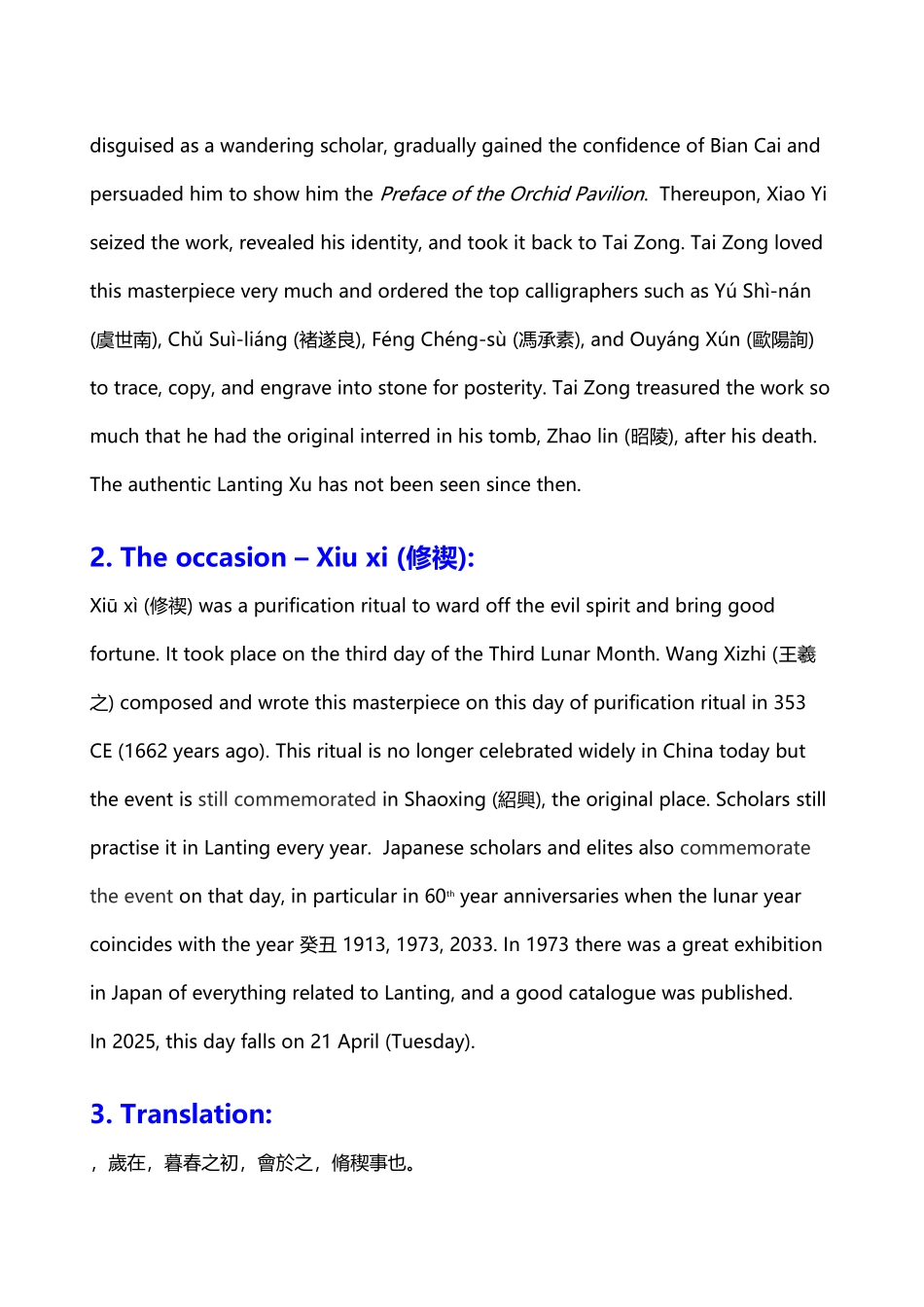中英对比 兰亭集序(4 页)Good is good, but better carries it.精益求精,善益求善。Lanting Xu (Preface of the Orchid Pavilion)《蘭亭序》by Wang Xizhi (王羲之) This copy (摹本) of Lanting Xu 《蘭亭序》called ‘Shénlóng běn’ copy (神龍本). It is believed that this is a copy by Féng Chéng-sù (馮承素). This copy is kept in the Beijing Palace Museum 1. Origins of the Preface:The Lanting Xu (Preface of the Orchid Pavilion)《蘭亭序》or Lanting ji Xu 《蘭亭集序》is a famous work of calligraphy by Wang Xizhi (王羲之) (301 CE to 363 CE), composed in the 353 CE. Written in elegant semi-cursive script and underpinned by deep philosophical thinking, it is among the best known and often copied pieces of calligraphy in Chinese history and also a famous piece of Chinese literature. It is revered as the best running calligraphy (天下第一行書). Wang Xizhi is respected as Shu Sheng (書聖), ‘Sage of Calligraphy’ or ‘Super Master of Calligraphy’.Lanting Xu contains 28 vertical lines and 324 characters.According to legend, the original copy was passed down to successive generations in the Wang family in secrecy until the monk Zhi Yong (智永), dying without an heir, left it to the care of a disciple monk, Bian Cai (辯才). Emperor Tai Zong of Tang Dynasty (唐太宗) (599 CE to 649 CE) heard about this masterpiece. He sent messengers on three occasions to retrieve the text, but each time Bian Cai responded that it had been lost. Finally Tai Zong dispatched Xiao Yi (蕭翼) who, disguised as a wandering scholar, gradually gained the confidence of Bian Cai and persuaded him to show him the Preface of the Orchid Pavilion. Thereupon, Xiao Yi seized the work, revealed his identity, and took it back to Tai Zong. Tai Zo...


